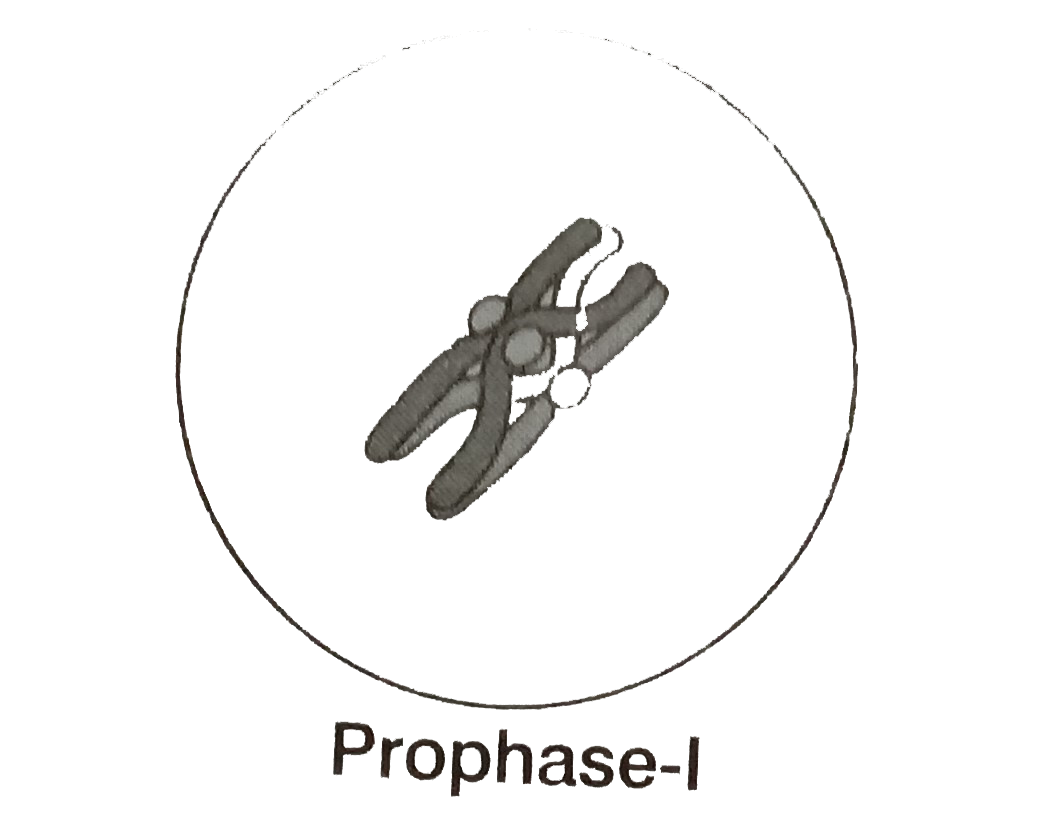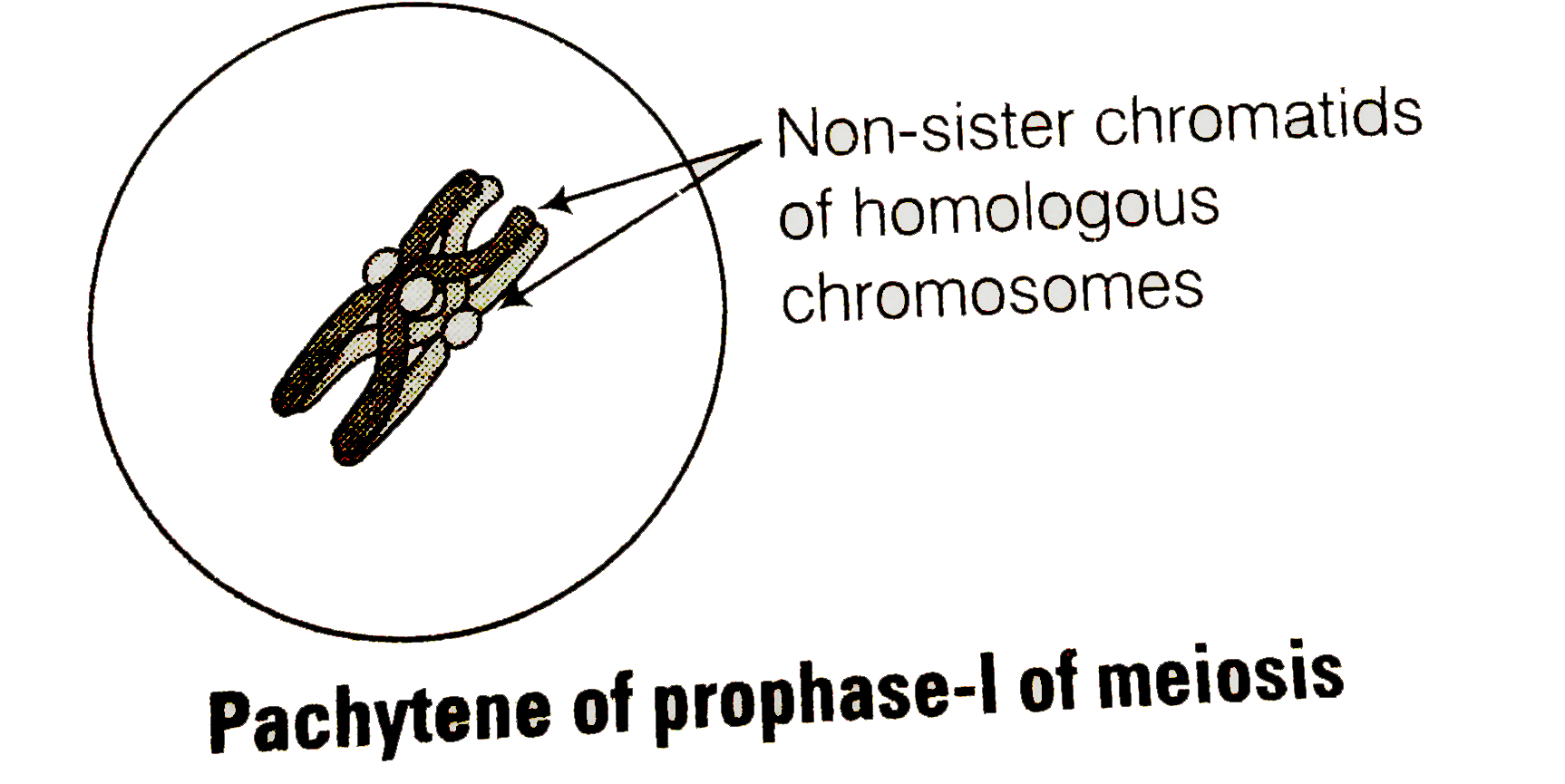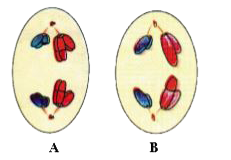The diagram shows a bivalent at prophase -I of meiosis. Which of the four chromatids can cross over ?

Video Solution
Text Solution
The homologous chromosomes lie parallel to each other in leptotene stage. Each chromosome has four chromatids and are bivalent. The non-sister chromatids of homologous chromosomes cross over in pachytene stage of prophase-I

|
Updated on:21/07/2023
Topper's Solved these Questions
- BOOK - NCERT EXEMPLARCHAPTER - CELL CYCLE AND CELL DIVISIONEXERCISE - Short Answer Type questions13videos
CELL CYCLE AND CELL DIVISION
- BOOK - NCERT EXEMPLARCHAPTER - CELL CYCLE AND CELL DIVISIONEXERCISE - Long Answer type question6videos
CELL CYCLE AND CELL DIVISION
- BOOK - NCERT EXEMPLARCHAPTER - CELL CYCLE AND CELL DIVISIONEXERCISE - Long Answer type question6videos
CELL CYCLE AND CELL DIVISION
- BOOK - NCERT EXEMPLARCHAPTER - CELL : THE UNIT OF LIFE EXERCISE - Long Answer Type Questions1videos
CELL : THE UNIT OF LIFE
- BOOK - NCERT EXEMPLARCHAPTER - CHEMICAL COORDINATION AND INTEGRATIONEXERCISE - Long Answer Type Questions5videos
CHEMICAL COORDINATION AND INTEGRATION
Similar Questions
Knowledge Check
- Question 1 - Select One
A bivalent of prophase I represent
AOne centromere with two chromatidsBTwo centromeres with two chromatidsCTwo centromere with four chromatidsDFour centromere with four chromatids - Question 2 - Select One
After meiosis - I, the two chromatids of a chromosome are :-
AGenetically similarBGenetically differentCThere occurs only one chromatid in each chromosomeDNone of the above - Question 3 - Select One
After meiosis - I, the two chromatids of a chromosome are :-
AGenetically similarBGenetically differentCThere occurs only one chromatid in each chromosomeDNone of the above
Given diagrams shows the phases of meiosis. Identify the phases :-
 View Solution
View SolutionThe correct sequence of prophase–I of meiosis is :–
View SolutionWhich stage of prophase I of meiosis lasts for many days?
View SolutionHomologous pairing in prophase I of meiosis I is called
View SolutionThe correct sequence of prophase–I of meiosis is :–
View Solution

